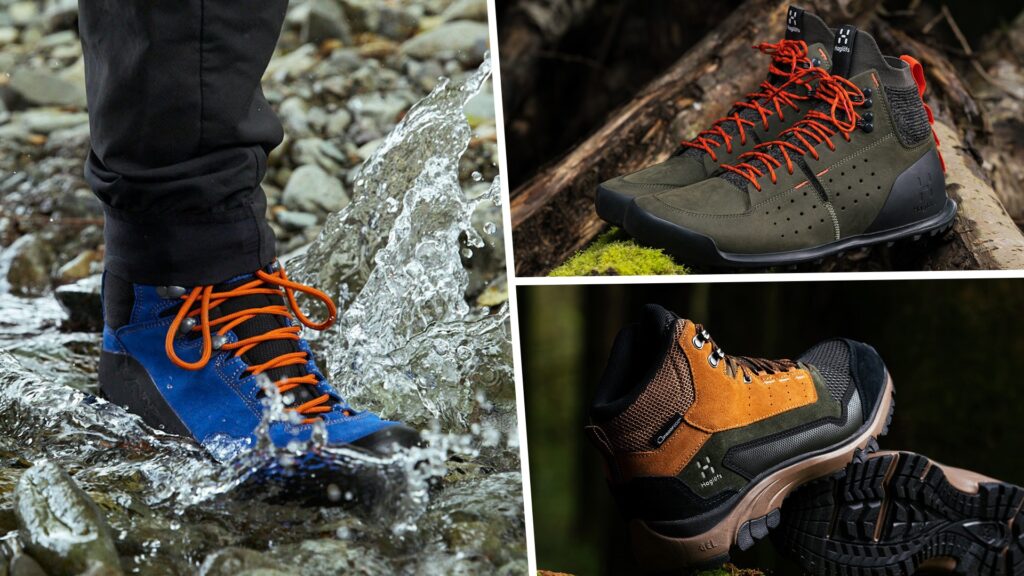Men's Hiking Footwear: Conquer Trails with Comfort & Confidence
When it comes to hiking, selecting the right footwear is crucial for a comfortable and enjoyable experience. The perfect pair of hiking shoes can make all the difference in your overall hiking experience, providing support, stability, and protection from the elements. Let’s embark on a journey through the diverse world of men’s hiking footwear, weighing their advantages and disadvantages, and identifying key aspects for an informed decision.


Types of Men’s Hiking Footwear
There are four primary types of hiking footwear for men: hiking boots, hiking shoes, hiking sandals, and trail runners. Each type has its unique characteristics, advantages, and disadvantages, which we’ll discuss in detail below.
Hiking Boots
Hiking boots are the traditional choice for most hikers and offer excellent support, durability, and protection. These boots typically have a high-cut design that provides ample ankle support, making them ideal for long hikes or backpacking trips with heavy loads. The sturdy construction and rugged outsoles of hiking boots provide excellent traction on various terrains, from rocky trails to muddy paths.
- Benefits: Hiking boots offer superior ankle support, durability, and protection from rocks, roots, and other trail hazards. They’re well-suited for extended hikes and backpacking trips with heavy loads.
- Drawbacks: The sturdy construction of hiking boots can make them heavier and less breathable than other types of hiking footwear. They may also require a longer break-in period to feel comfortable.
- Best for: Hikers who prioritize ankle support, durability, and protection, particularly on challenging terrains or during multi-day backpacking trips.
Hiking Shoes
Hiking shoes are a more lightweight and versatile option compared to hiking boots. They typically feature a low-cut design and offer less ankle support than boots but are often more comfortable and easier to break in. Hiking shoes are an excellent choice for day hikes or light backpacking trips where the terrain is not too challenging, and the load is relatively light.
- Benefits: Hiking shoes are lighter and more breathable than hiking boots, making them a comfortable option for day hikes and light backpacking trips. They also tend to have a shorter break-in period.
- Drawbacks: The low-cut design of hiking shoes provide less ankle support than boots, making them less suitable for challenging terrains or carrying heavy loads.
- Best for: Hikers seeking a lightweight and versatile option for day hikes or light backpacking trips on moderate terrains.
Hiking Sandals
Hiking sandals offer an open and breathable design, perfect for warm weather hiking or water-based activities. While they lack the support and protection of hiking boots or shoes, they can be a comfortable and practical option for certain situations.
- Benefits: Hiking sandals provide excellent breathability and quick-drying capabilities, making them ideal for warm weather hikes or water-based activities.
- Drawbacks: Hiking sandals do not offer the same level of support, protection, or traction as hiking boots or shoes, making them unsuitable for challenging terrains or carrying heavy loads.
- Best for: Hikers looking for a breathable and quick-drying option for warm weather hikes or water-based activities on easy to moderate terrains.
Trail Runners
Trail runners are designed for those who prefer a faster pace on the trails. They are lightweight and flexible, providing excellent traction on various surfaces. While they don’t offer the same level of support or protection as hiking boots or shoes, trail runners can be an excellent option for those prioritizing agility and speed.
- Benefits: Trail runners are lightweight and flexible, offering excellent traction and promoting agility and speed on the trails.
- Drawbacks: The lightweight design of trail runners sacrifices some support, protection, and durability compared to other types of hiking footwear.
- Best for: Hikers who prioritize speed and agility on the trails, particularly on well-maintained or moderate terrains.
What to Look for When Buying Men’s Hiking Footwear
Now that you’re familiar with the different types of hiking footwear, it’s essential to consider the following factors when making your purchase:
- Fit: A proper fit is crucial for comfort and to prevent blisters. Try on multiple sizes and wear the socks you plan to hike in when trying on footwear. Don’t forget to leave some room for foot swelling during long hikes.
- Durability: Look for high-quality materials and construction to ensure your hiking footwear can withstand the wear and tear of the trails.
- Ankle Support: Depending on your needs, select a high-cut or low-cut design to provide the appropriate level of ankle support.
- Outsole Design: The outsole should provide excellent traction on various terrains. Look for deep lugs and a sticky rubber compound for optimal grip.
- Waterproofing: Waterproof hiking footwear can help keep your feet dry in wet conditions, but it may be less breathable than non-waterproof options. Consider your hiking environment and personal preferences when deciding.
- Breathability: For warm weather hiking or those who tend to have sweaty feet, opt for footwear with breathable materials or open designs, like hiking sandals.
- Weight: Lighter footwear can help reduce fatigue during long hikes, but may sacrifice some support, protection, or durability. Consider your hiking style and needs when selecting the weight of your footwear.
Taking into account these crucial aspects and familiarizing yourself with the array of men’s hiking footwear options will empower you to make an informed decision. With the ideal pair in hand, you’ll be ready to tackle any trail and embrace the beauty of nature on your upcoming outdoor excursions. Here’s to unforgettable experiences and happy trails!
